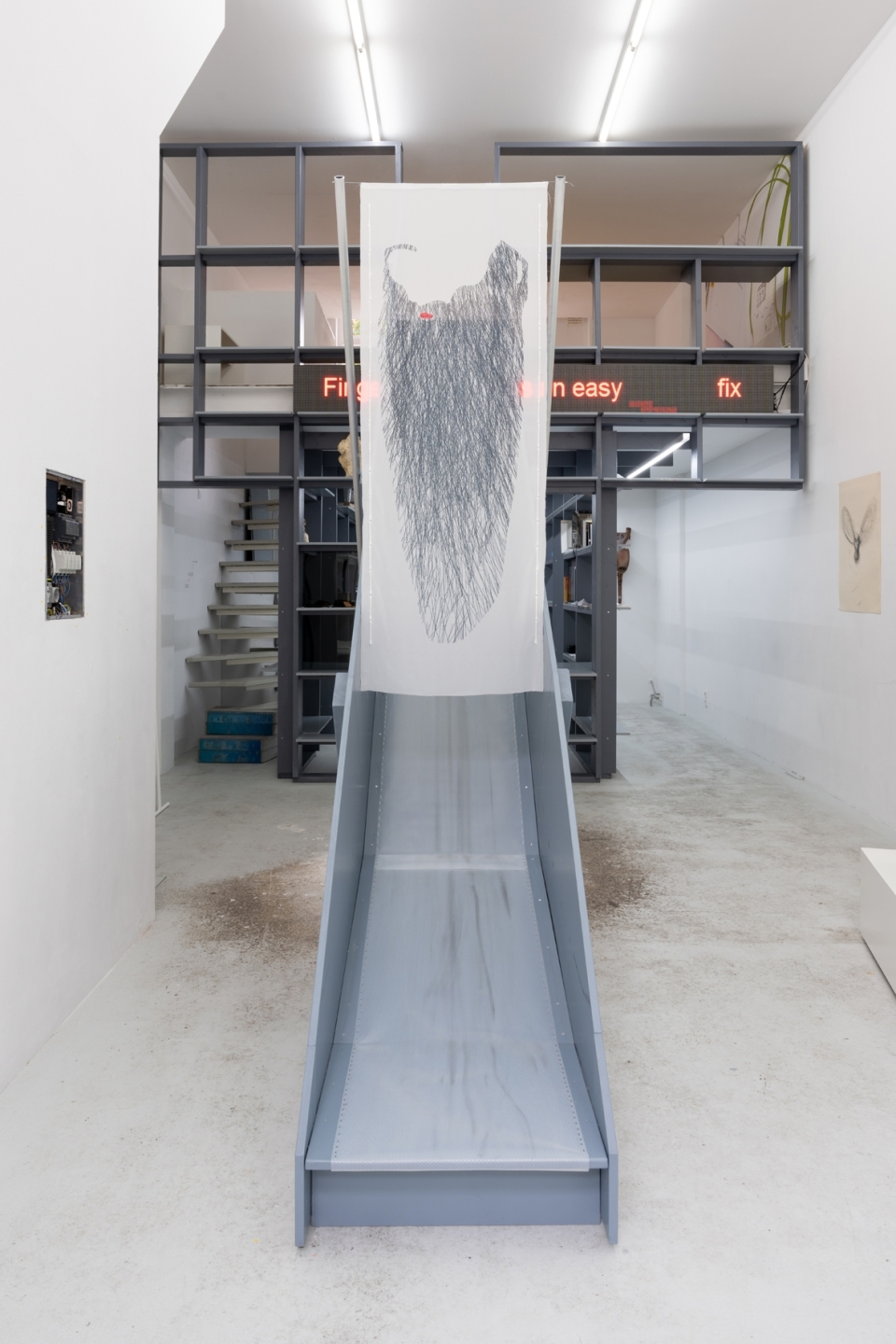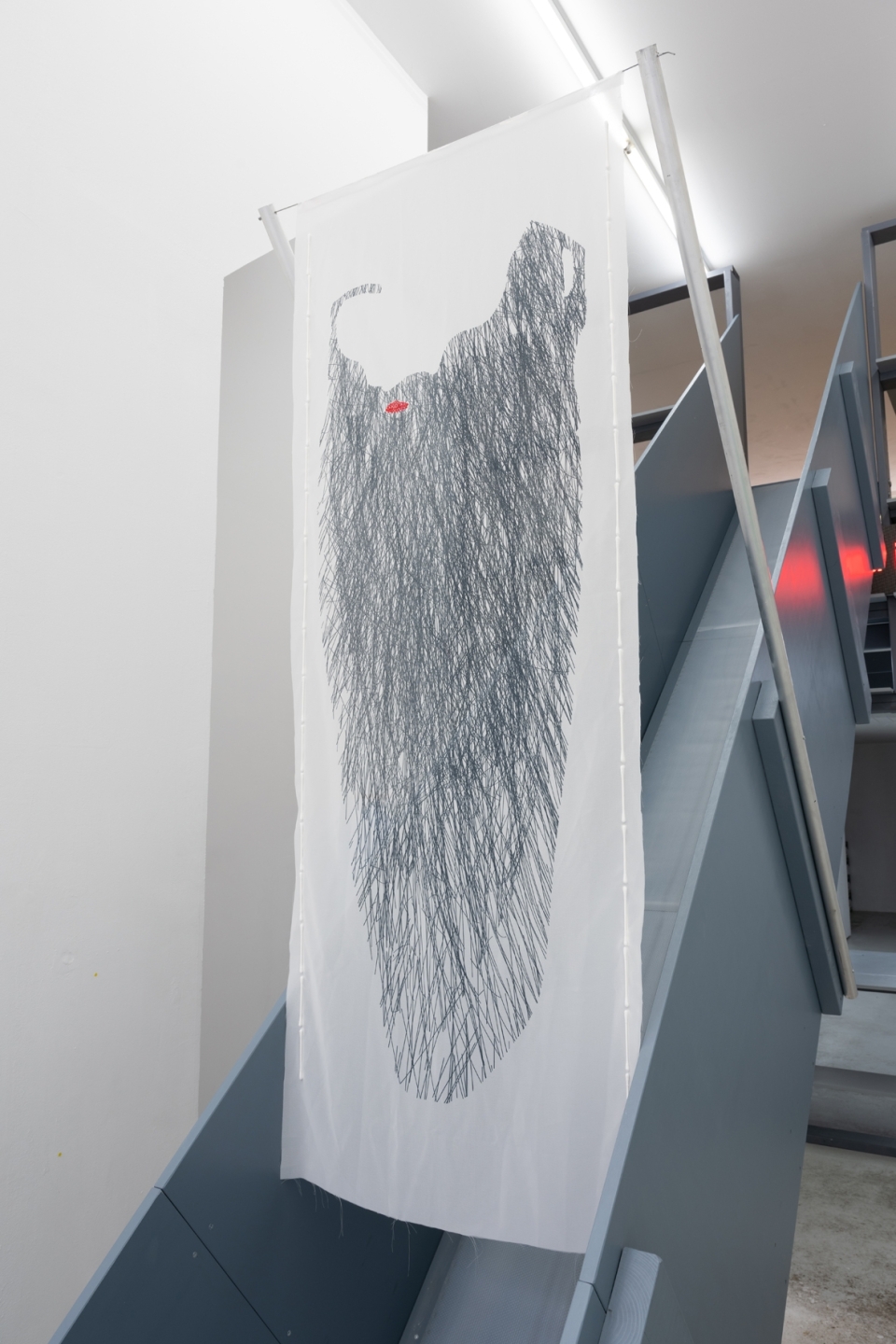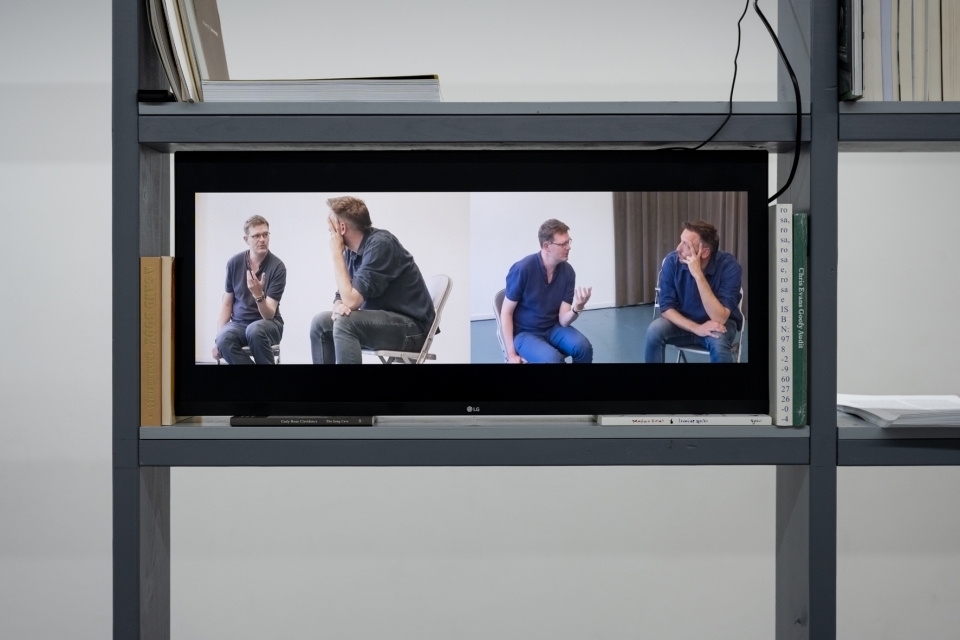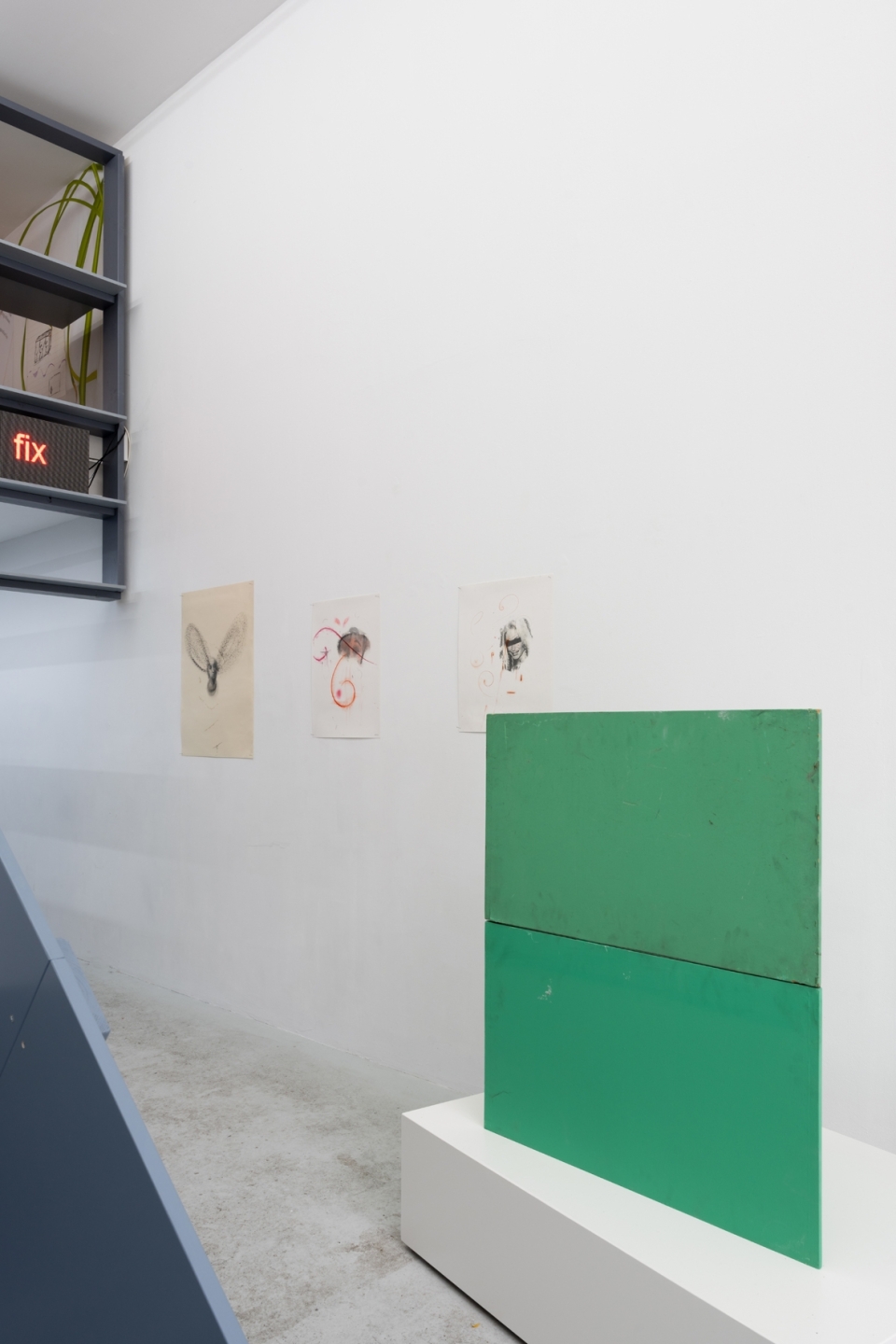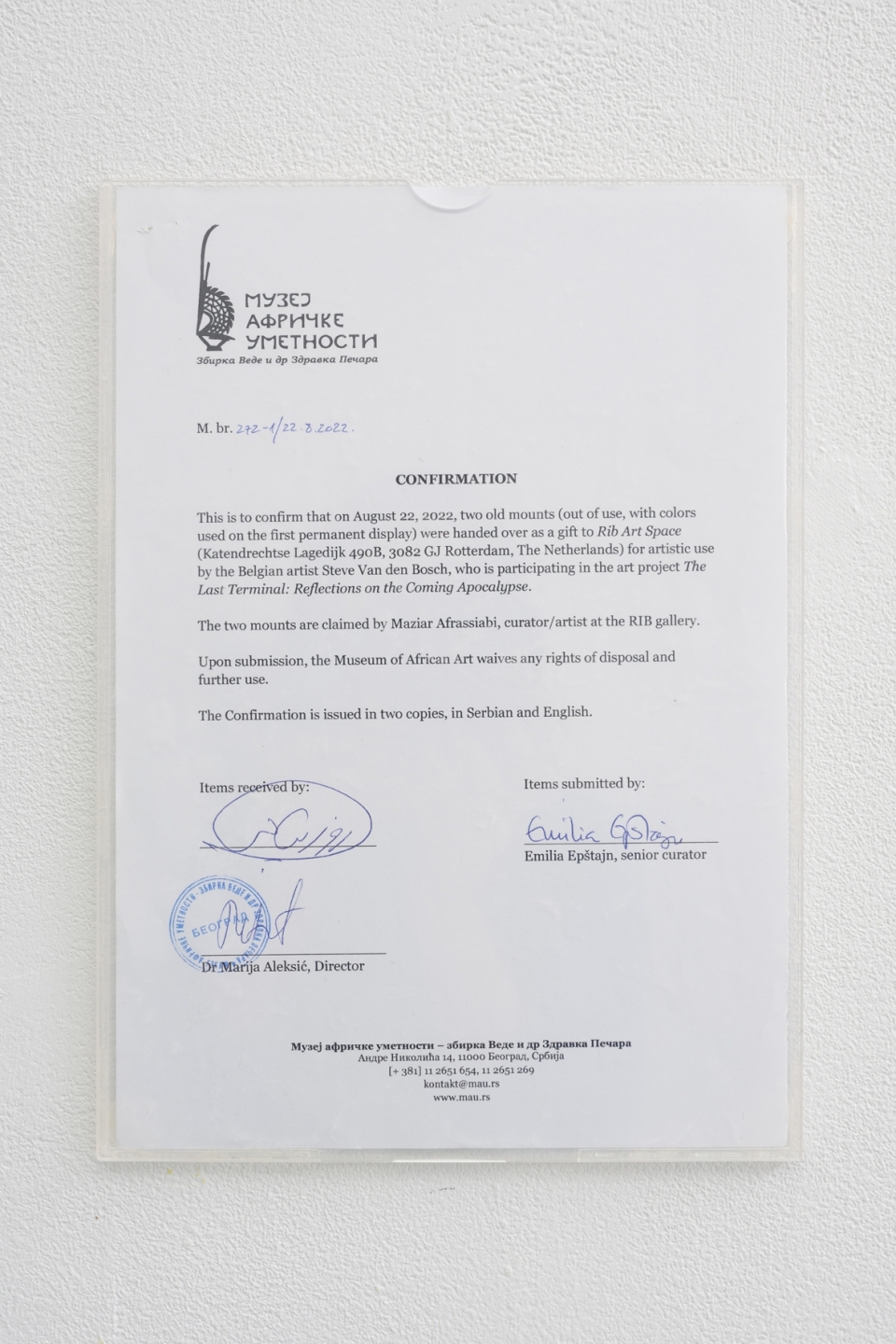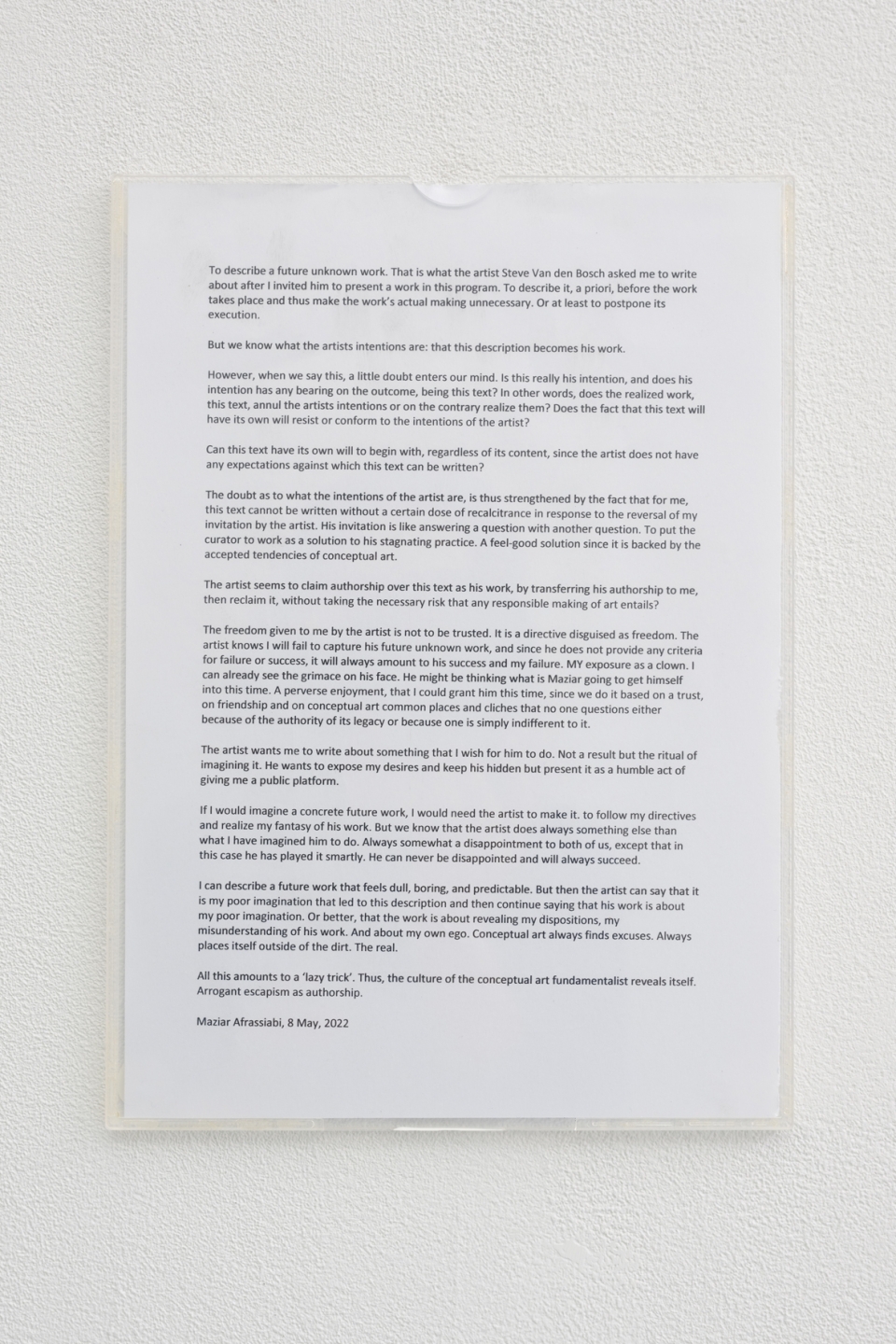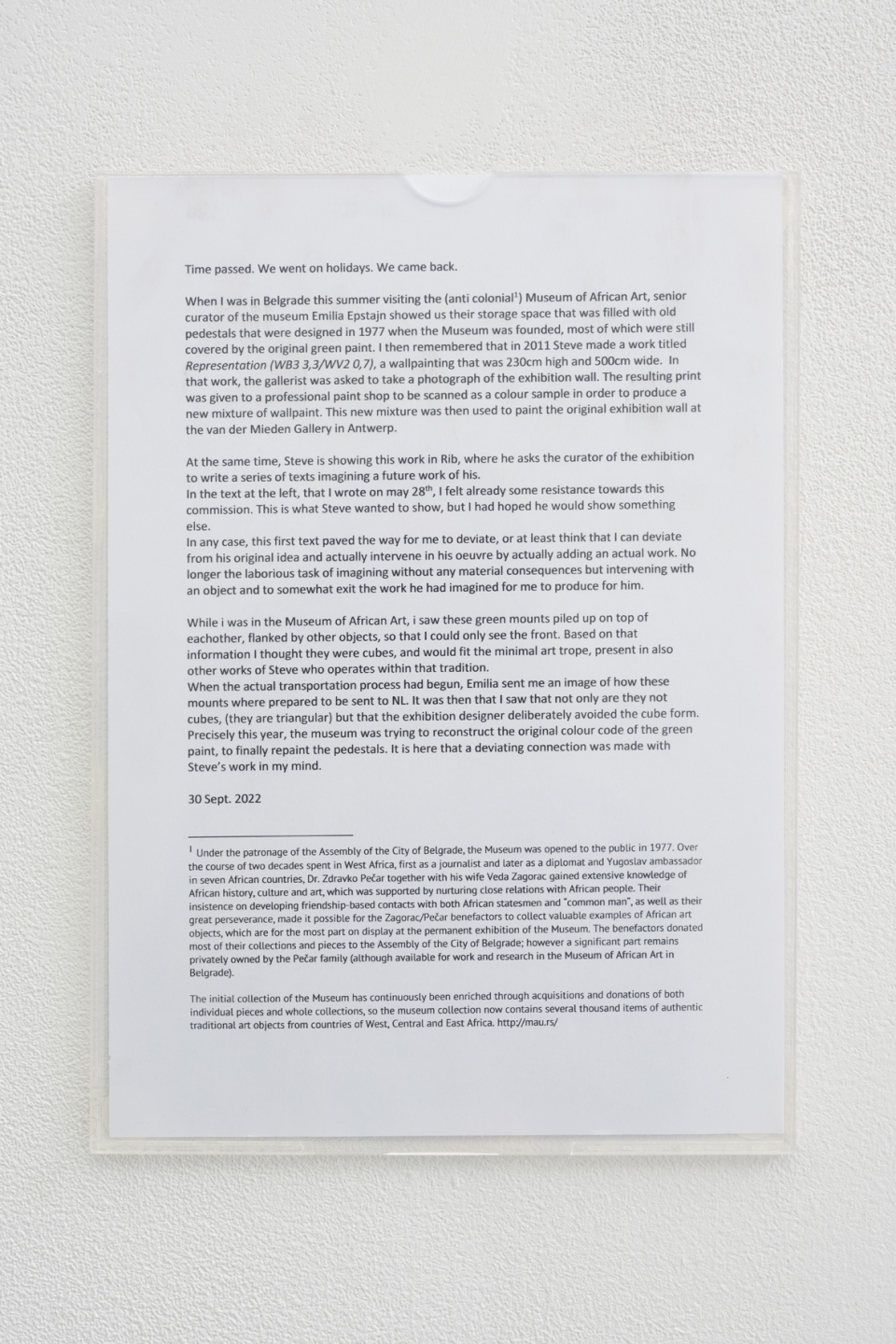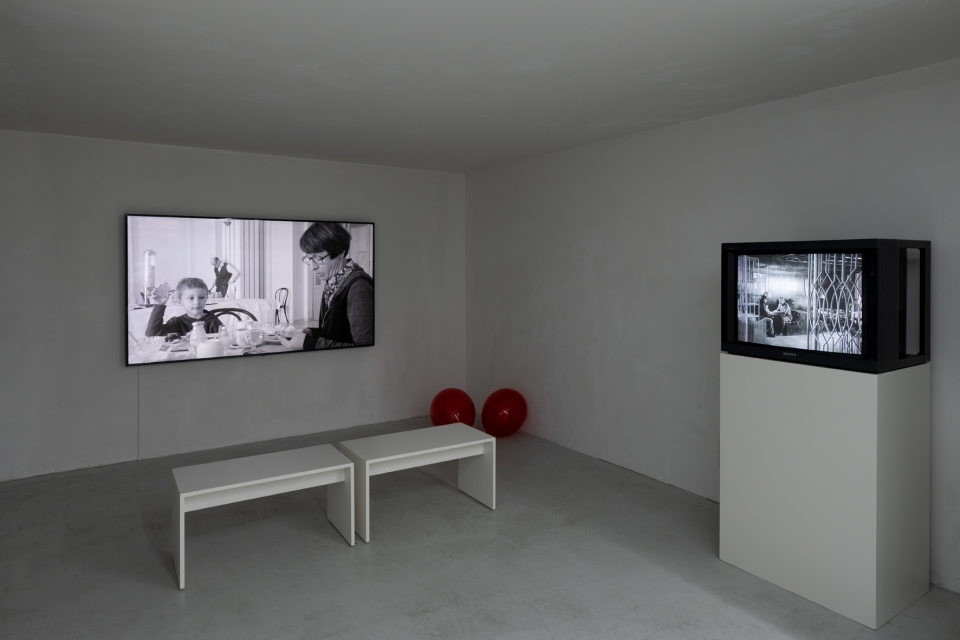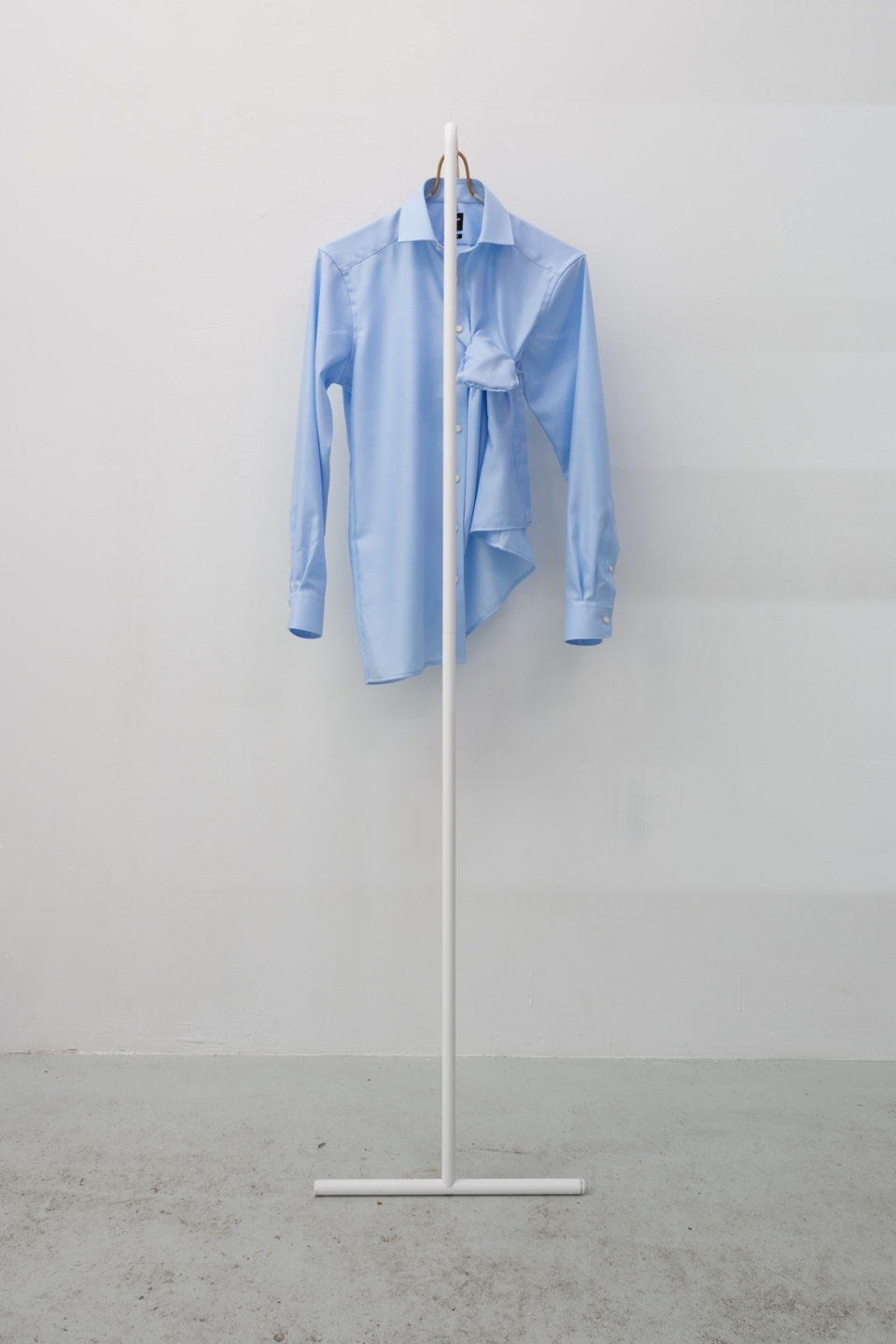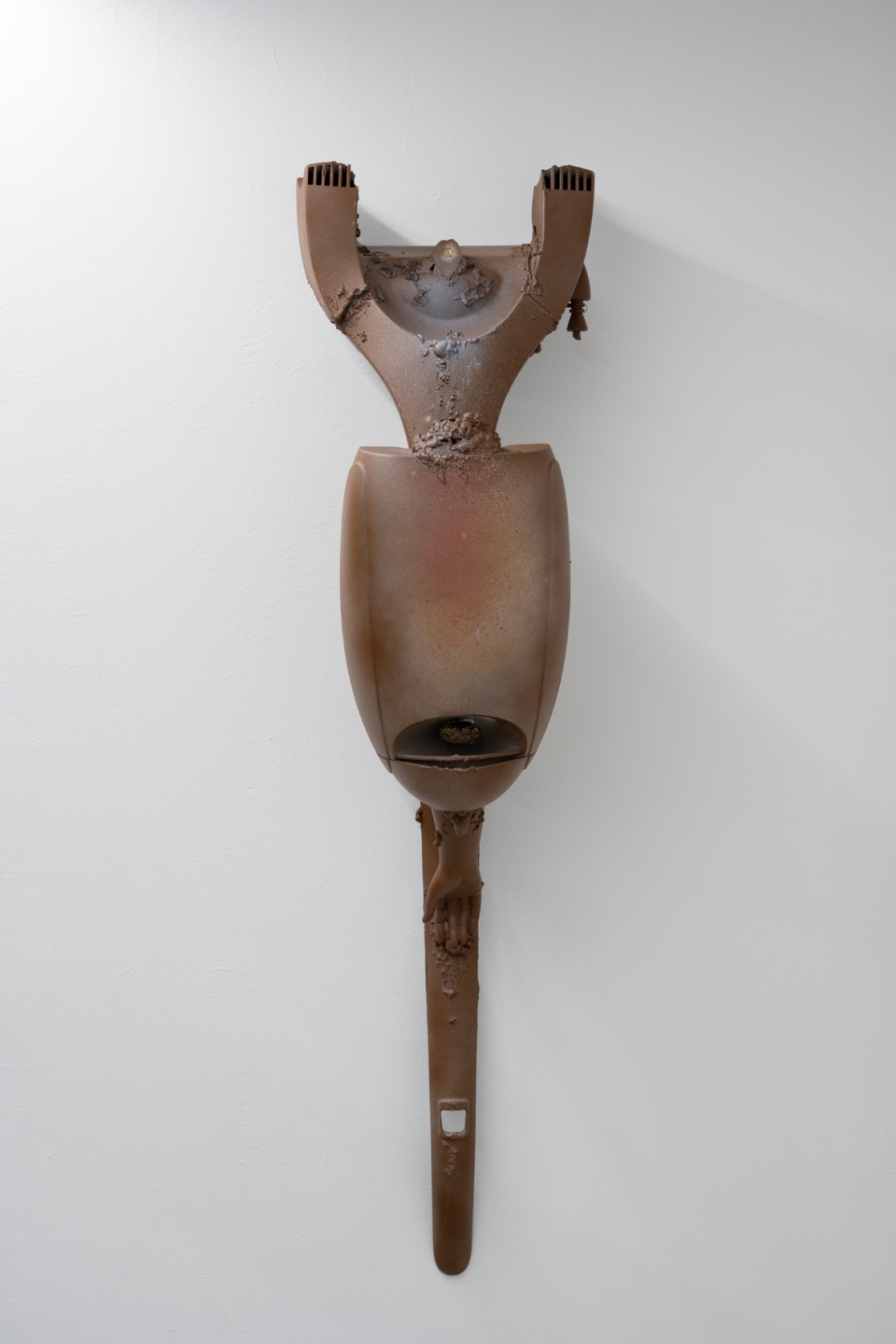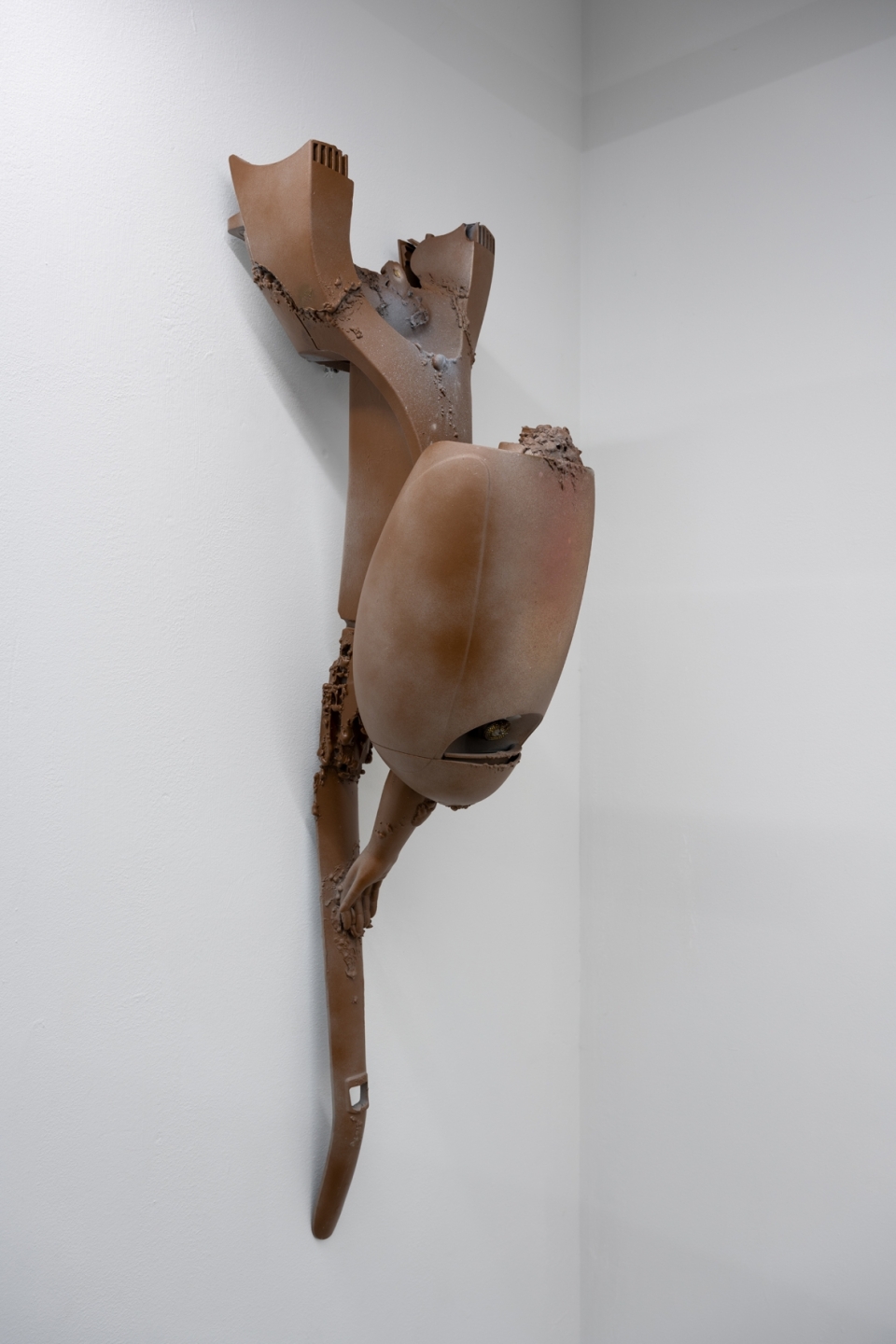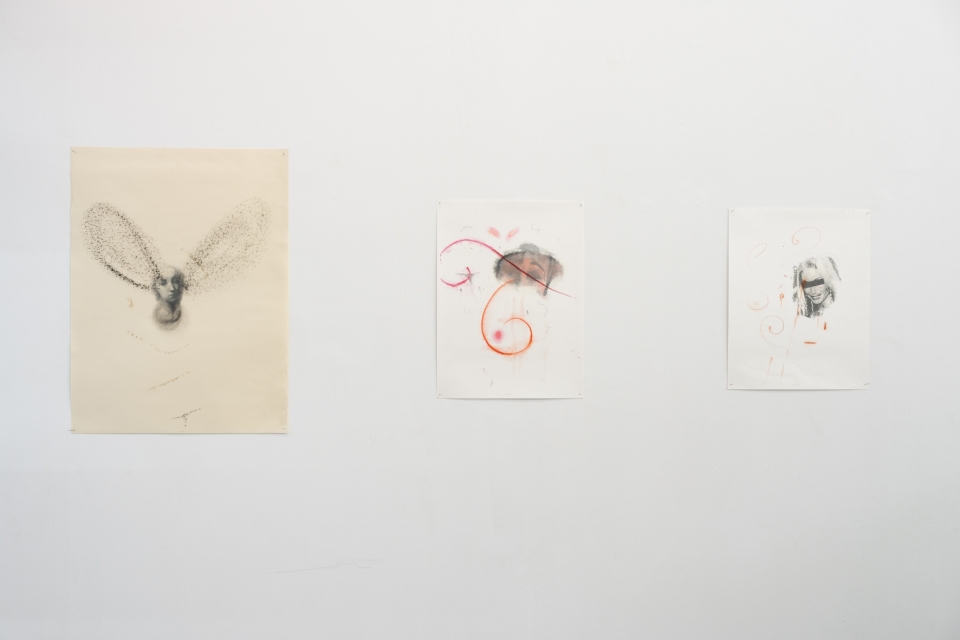Part 5: Vibrato
30.09.2022, 19:00 – 23:00
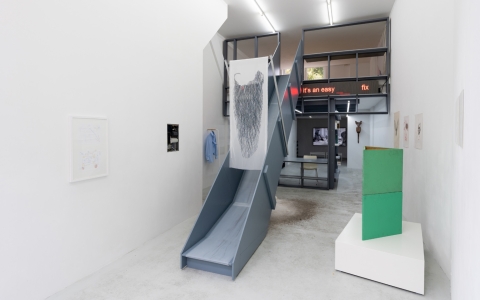

Exhibition view Part 5: Vibrato, September 2022, Rib. Photo: Lotte Stekelenburg
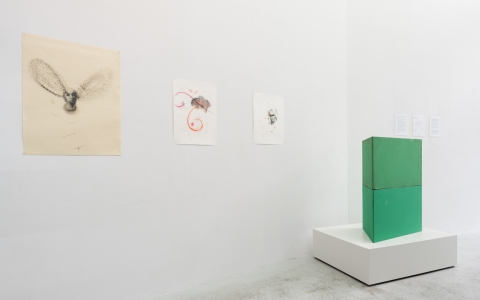

Exhibition view Part 5: Vibrato, September 2022, Rib. Photo: Lotte Stekelenburg
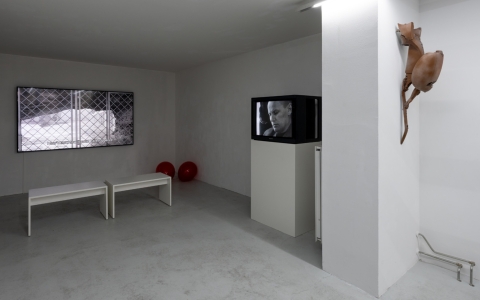

Exhibition view with works by Josef Dabernig and Thomas Helbig, September 2022, Rib. Photo: Lotte Stekelenburg
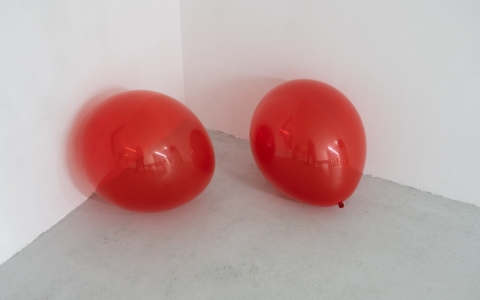

Exhibition view Part 5: Vibrato, September 2022, Rib. Photo: Lotte Stekelenburg
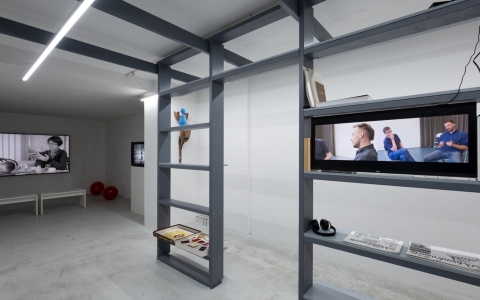

Exhibition view with works by Josef Dabernig, Thomas Helbig, Kianoosh Motellebi, and Jack Segbars & Bo Stokkermans, September 2022, Rib. Photo: Lotte Stekelenburg
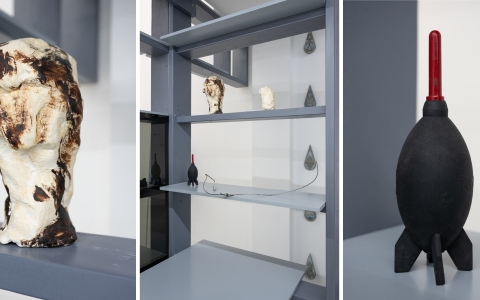

Exhibition view with works by Shahin Afrassiabi, Olivier Goethals, and Mathew Kneebone, September 2022, Rib. Photo: Lotte Stekelenburg
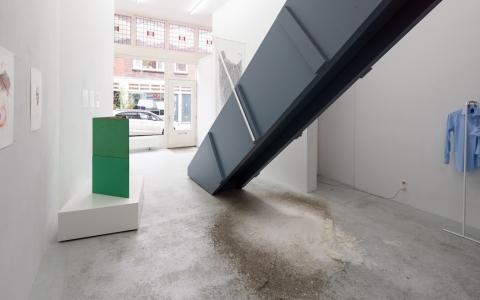

Exhibition view Part 5: Vibrato, September 2022, Rib. Photo: Lotte Stekelenburg
With works by: Shahin Afrassiabi, Josef Dabernig, Judy Dunaway, Peter Fengler, Steve Van den Bosch, gerlach en koop, Olivier Goethals, Thomas Helbig, Mathew Kneebone, Kianoosh Motellebi, Jack Segbars & Bo Stokkermans, and Marije de Wit.
Following the introduction of The Last Terminal: Reflections on the Coming Apocalypse last September, and Part 1: Survival of the Fittest: the big toe of little big man in November 2021, we continued with Part 2: Natural Selection in February 2022, Part 3: The Phantasy in March, Part 4: The Uncommunicative, and now Part 5: Vibrato. We are gradually adding new works and replacing some existing ones to build a narrative that evolves whilst we are rethinking our pathways and future.
Slide into being. Slither into existence. Swim into a pool that was bigger than you expected. Now we’re taking notes from the cricket, whose vibrations sing a seasonal song in looped repetitions ‘and then, and then, and then’: What now? Shall I write about the table that makes squeezing sounds as I press the keys, as if crickets are making love? Why not? Or mosquitos carving their way through my TK-Maxx trousers?
A new architectural intervention (Susurak) as part of the spatial interventions by Olivier Goethals will have you pass through the beard of Fath-Ali Shah Qajar, and glide over the remnants of Kianoosh Motallebi’s work From a Marvellous Faucet. In addition to the fact that Motallebi’s work was knocked over last month by a visiting neighbor, it has also been attracting dust and debris from the MDF plates that were cut in its vicinity.
Jack Segbars and Bo Stokkermans offer a different perspective within a critical loop in a video featuring a conversation between Willem Schinkel and Rogier van Reekum in the auditorium of Tent/Kunstinstituut Melly, a site which they consider an interface between “going public and the arts”. In their words, “A duo duetting presents a third voice so to speak. A performance of labor.”
As part of a non-consensual written exchange around a future work that has not yet appeared by Steve Van den Bosch, Maziar Afrassiabi has brought two green pedestals to Rib. These objects, which have not been re-painted since their original construction in 1977, were gifts from Senior Curator Emilia Epštajn of the Museum of African Art, Belgrade (a collection, coincidentally built on gifts).
Josef Dabernig’s film Stabat Mater was shot in Puglia, South East Italy, in the architectural remains of a fascist era hotel. The dialectics of interior/exterior, light/dark, life/death, mother/child find balance in proximity with the organ etude composed by Christoph Herndler (based on one of Schubert’s Stabat Mater themes). Dabernig writes, “Hotel guests look restrained, sedated in the diffuse light of the service provider’s shimmering cage. A network of joists, pilasters and fluting exposes the proverbial off-season chill in the seating arrangements. Smartphones and tablets mask a total lack of communication. While in the dining room everything seems under control, outside nature is ready to attack. Resembling the work of cyclopes, the coastline braves the breakers. Rocks form a hyper-expressive bastion against the water, as if the town were a matter of permanent self-justification.”
In Rosa Coeli, the central character returns to his childhood village to bury his father. Dabernig writes, “…the history of his family reflects the eventful fate of a Central European settlement over the centuries. There is talk of war and migration, of people and nature, of the decline of the Rosa Coeli monastery and of the healing effects of wine. While Pellandini’s text—regularly portioned over the film—is anti-illustrated by fixed camera shots of local motifs and hotel interiors, the plot of a second story, grotesquely so to speak, pushes itself between the linguistic memories. Again and again, apparent references push themselves between word and image and leave—with the constant oscillation between feeling and structure—the irritation of a cynical game about the dialectic depths of history and modernity.”
gerlach en koop, Untitled, 2022, 11 × 9 × 3,5 cm, shirt, clothes rack and hanger: “The clothes rack reinforces the perception that this one shirt is divided. It has a straight side and one that is intricately shaped. A closer look reveals that the shape is much less complex than it appeared at first: the breast pocket has simply been pulled inside out in a sculptural gesture. Like a tongue. Mute.
In the film Pickpocket by Robert Bresson a provocative gesture links two interior spaces. A man suspected of pickpocketing is summoned to the police station. Sure of himself he demonstrates to the officer how the knife he has been given can be used to cut open a breast pocket—thus fearlessly revealing his knowledge and skills. At the very same moment his apartment is turned inside out by police officers looking for proof. It was a ruse that deprived the man’s gesture of the power to provoke.”
Thomas Helbig’s sculpture (Sender) and drawings (Untitled and Ex) betray a world-weary fatigue, unspectacular violence, and ghostly figures from the past.
Shahin Afrassiabi was born in Tehran. He studied art at Goldsmiths University in London. He works in Andalucia, Spain. Selected solo exhibitions include Paintings 2016–2018 at Soy Capitán, Berlin (2018), Radical Substance at Soy Capitán, Berlin (2015), Theory of Life at MOT International, London (2012), Subject to Form at Limoncello Gallery, London (2010). Afrassiabi’s work was part of several group shows, such as Been Caught Stealing at Kunsthalle Exnergasse, Vienna (2014), Showcase Preview at South London Gallery, London (2004), Transmission Gallery, Glasgow (2002), Early One Morning, Whitechapel Gallery, London (2002), and ICA, London (2000).
Steve Van den Bosch focuses on the seemingly expressionless, tacit and unspectacular. His work results from zooming in on the boundary between invisibility and pure materiality and puts the implications of artistic production, exhibition and interpretation into perspective with a taste for the absurd. By erasing, doubling, blurring, reversing or reconnecting the elements that define a work of art, objects and situations are created that continually undermine their own status as works of art and almost casually refer to the surrounding conditions from which work can emerge and in which it is subsequently exhibited. Van den Bosch was a resident at HISK in Antwerp (1998–2001) and the Rijksakademie van beeldende kunst in Amsterdam (2006–07).
bostokkermans1995 is of it’s time. being one of many who was born into conditions (Tilburg-Netherlands) and who continously tries to survive and (ex)change based on the performative makeability of living.
Josef Dabernig (AT, 1956) is a visual artist and filmmaker based in Vienna: “In my short films I try to create a symbiosis of elements from narrative cinema and the tradition of experimental film. Simple narrative threads are interwoven with strictly conceived spatial settings and elaborate dramaturgies of editing; moreover, the relationship of image and sound is generally conceptually loaded with anachronisms and clashes of genre.”
Judy Dunaway is primarily known for her numerous works for latex balloons as sound producers, including sculptural sonic performances, sound installations, interactive pieces and acousmatic works. Dunaway began using balloons as a preparation on her guitar in the late 1980s, but her obsession with them as sound conduits grew out of the AIDS crisis: “Because repression had been a major factor in delaying the dissemination of proper information about prevention, I knew that I must approach my latex instruments without inhibition. This non-judgmental aural relationship and its corporeal visual manifestation remains a cornerstone of my work.”
Peter Fengler is the artistic director of DE PLAYER but besides that he does his own stuff as Ultra Hobby Complex or Chocoman in his soloworks and he’s a member of cult-I-media chroupe Coolhaven.
Collective artist gerlach en koop works in twofold to invite a third. They live and work in The Hague, NL and Brussels, BE. Solo exhibitions include GAK Bremen, DE; Bonnefantenmuseum, Maastricht, NL; de Appel, Amsterdam, NL; Temporary Gallery, Cologne, DE; Alte Fabrik, Rapperswil-Jona, CH; 1646, The Hague, NL; Kröller-Müller Museum, Otterlo, NL; Library Van Abbemuseum, Eindhoven, NL; Stroom, The Hague, NL. Their work has been part of group exhibitions at the Project Arts Centre, Dublin, IE; La Criée, Rennes, FR; FIAC, Jardin des Tuileries, Paris, FR; de Appel, Amsterdam, NL; Mu.ZEE, Oostende, BE; de Vleeshal, Middelburg, NL; Netwerk, Aalst, BE; Le Grand Café, Saint-Nazaire, FR; Stroom, The Hague, NL; A Tale of A Tub, Rotterdam, NL; Lesage, Brussels, BE; S.M.A.K, Ghent, BE; the Baltic Triennial at CAC Vilnius, LT and Bunkier Sztuki, Kraków, PL; and Hammer Museum, Los Angeles, USA.
Olivier Goethals studied Architecture and Urban Development. He is working simultaneously as architect and artist. In his wide practice he researches the connection between space and consciousness. Olivier made spatial interventions and artistic installations for venues, such as Het Nieuwe Instituut Rotterdam, Z33 Hasselt, Extra City Antwerp, Be-Part Waregem, SMAK Ghent & Palais De Tokyo Paris. Previously he worked as a freelance senior architect for De Vylder Vinck Taillieu (2008–2016). Since 2010, he is teaching at the KULeuven Architecture Department. He was a guest critic at RU Ghent faculty of Architecture, LUCA School of Arts Experimental Studio and ETH Zurich faculty of Architecture. Goethals is in charge of the design and implementation of all spatial interventions for the art collective 019.
Thomas Helbig (DE, 1967) is an artist based in Berlin. The practice of Thomas Helbig contains painting, drawing and sculpture, while each of the media plays on its own field. The focus of the paintings is colour itself—in its intrinsic value, its materiality and the ability to create spatial illusions from countless shades of light and dark. In contrast, his collage sculptures demonstrate a different kind of transformation of the source materials he uses. His repertoire is based on a fundus of discarded, thrown-out things, as well as kitschy plastic sculptures. Helbig mixes and connects these disparate elements into new forms, which are displayed as coded messages from an enigmatic present. Helbig attended the Academy of Fine Arts, Munich and Goldsmiths, University of London, from 1989 to 1996, and is represented by Galerie Guido W. Baudach, Berlin.
Mathew Kneebone’s practice is founded on research into uncertainties surrounding technology, often combining different histories, myths, and folklore. His work touches upon various media including drawing, electronics, writing, sound, and performance to reconfigure or re-contextualize certain technologies, exploring an ambivalent blend of past and present. His work has recently been exhibited at Kunstverein, Amsterdam; 019, Ghent; Extra City, Antwerp; and Cloaca Projects, San Francisco. His writing has been published in Trigger Magazine, OASE Journal for Architecture, The Bulletins of The Serving Library, Another World, Umwelten, among others. He has given talks and workshops at Minnesota Street Project, San Francisco; V2_ Lab for Unstable Media, Rotterdam; Central Saint Martins, London; Sandberg Instituut, Amsterdam; San Serriffe, Amsterdam; EKA Gallery, Tallinn; Sitterwerk, St. Gallen; UEL, London. He teaches at California College of The Arts, San Francisco, where he is thesis writing supervisor.
Kianoosh Motallebi (UK, 1982) is a visual artist based in Brussels. He completed his master’s degree at the Slade School of Fine Art in London. Subsequently he was a resident at the Rijksakademie van Beeldende Kunsten. Motallebi took part in The Physical Center (Guest Projects, London, presented by Yinka Shonibare), Erased Walls (Berlin) and Rijksakademie Open 2011. His work has also been shown at the Van der Mieden Gallery (Antwerp) and he was artist-in-residence at Very Real Time (Cape Town). In 2017 he designed the coin De Stelling van Amsterdam Vijfje 2017 Zilver Proof. He is currently part of the artist collective Level Five (Brussels).
Jack Segbars is an artist based in Rotterdam. He is engaged with the conditions and parameters that define the politics of art production. The interconnections between the different positions: critic writer and visual artist are mobilized as artistic investigation. In 2009 he produced the publication All Around the Periphery (Onomatopee) that deals with the overlap of positions and domains. In 2012 it was followed by Inertia (Onomatopee) a travelogue of visits to Palestine that deals with artistic engagement. Segbars regularly writes articles on art and art-related subjects for Metropolis M, Witte Raaf, Parse and Open! He completed his PhD research at the PhDArts program of Leiden University the Netherlands.
Marije de Wit lives and works in Rotterdam. A selection of her recent activities are: artist talk in the context of artist in context, Netherlands Film Academy, Amsterdam; There Is So Much Thinking to Be Done, Wiels Project Space, Brussels; site-specific photo installation, Clermont-Ferrand (FR), thanks to Artistes en residence; and ESACM, VERY|BODY|TIME, edition of 25 posters, spread over free pasting places in Rotterdam.
Éléonore Pano-Zavaroni teaches art and art history at Esaaa (Annecy Alpes School of Art). She runs the art platform 5OU6ÎLES and the magazine Idoine and is one of the members of the scientific committee of the biennial Carbone, Saint-Etienne. Some of her exhibitions are Living Fair with Nayoung Kim, Changnyeong Bugok Spadium, South Korea (2019), Rendez-vous La Havane in Centro de arte Wifredo Lam, Cuba (2018) and Rendez-vous/Biennale de Lyon, Institut d’art contemporain, Villeurbanne (2017). She curated Eutrapelia, Back Lane West, Redruth, UK (2018) and published the monographic edition Entretien, Martial Déflacieux, Éléonore Pano-Zavaroni, Virginie Bobin, Stéphane Sauzedde, Esaaa éditions (2017). She is currently preparing a solo exhibition for next year at the Flaine Art Center and an artist’s book Rendez-vous.
Pano-Zavaroni has invited the following artists. In her words:
“Danaé Jérôme is a goddess who speaks cat. She is the intensity of the present. She radiates and connects. She presents herself as a designer or an artist, depending on the context and the person she is talking to. She acts, with no sense of hierarchy between situations. Fully there. Fully with—whether in a neighbourhood knitting association, a textile design project, or an art residency.
Anchored in the cosmos, Jérôme Tillié makes experimental music, original graphic design, unexpected exhibitions, the reception of a hotel. He has a sense of display and presentation that is as sensitive as it is subversive in its sincerity. This is beauty. In Jérôme Tillié‘s sentences, words appear where we least expect them and vice versa.
When I met Akim Pasquet, he was looking for ways to extract energy from stones. I then discovered his strength in creating art spaces where everyone is welcomed and finds their place. He federates and explores, driven by questions of affect and energy, their circulation in intimacies and in ensembles. He is a curator, artist, teacher and director of the Limbes art space and the Carbone Biennial.
Fabrice Croux, attentive, makes piles, stacks. He states that art is to increase the sensitive and understand in a non-verbal way. He eats things, techniques, and other edible foods. He bathes in time, sprinkled with magic and strangeness, making objects that are other.
Romain Bobichon has an experimental painting practice. I often have the impression that he creates an infinite painting that develops in many dimensions. It is a relationship to the world rather than a medium. He produces things that can be manipulated, things that can be thought of with the body. Moreover, he also makes music or, with other acolytes, a series of fiction.
Ash Kilmartin does a lot of collaborations; she has a sense of staging and dramaturgy. She is a storyteller, sculptor, performer, radio broadcaster, gardener, chef, and runs Life.
Maziar Afrassiabi is an artist, he makes poems in spite of himself, is attentive to dreams. He unfolds an artistic practice, and a way of thinking with others, through his curatorial practice, mainly at Rib, which he founded and directs. For some time now he has been making beautiful sculptures, between the Merzbau and Valentine Schlegel.”



